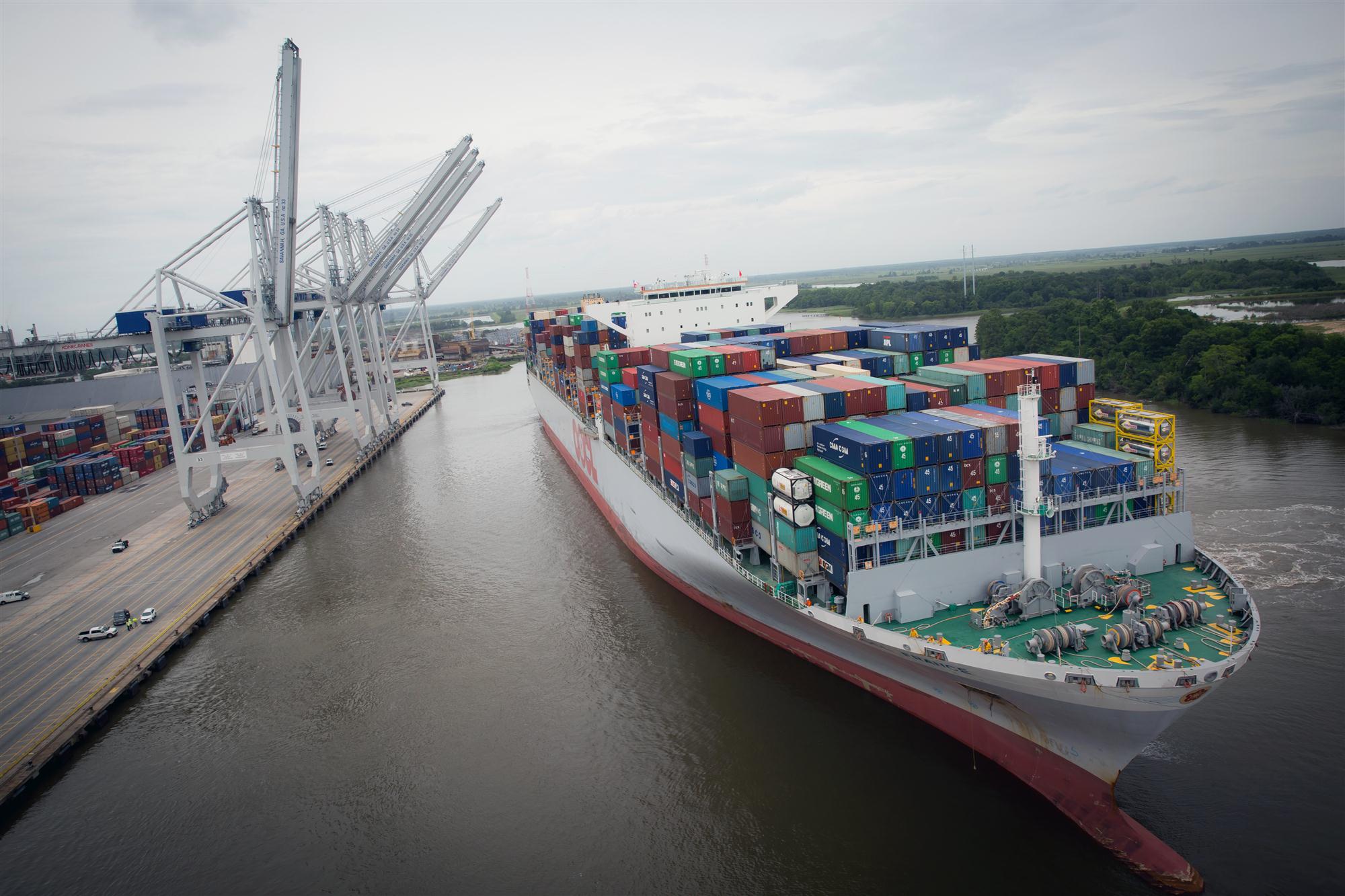The Port of Savannah in the state of Georgia, which relies on traffic with Asia for much of its business, would like to further strengthen its ties with Asian ports, including the member countries of the Association of Southeast Asian Nations (ASEAN); indeed, Savannah Port is upgrading its infrastructure and is deepening its harbour to accommodate the new generation of large container ships.
Representatives of Savannah Port point out that it is the fastest-growing port in the United States, having achieved an annual compounded 5.4% growth rate in the 2006-2016 period. Indeed, the port’s growth rate has been higher than many other competing ports, including those in Houston (+3.3%), Virginia (+2.7%) and New York/New Jersey (+2.0%).
In a recent interview with Asia Cargo News at the US State Department’s New York Foreign Press Center, Bart Gobeil, senior director of economic development of the Georgia Ports Authority (GPA), which manages Savannah, described Savannah as a “very heavy Asian port,” with extensive trade with Asia’s emerging economies.
“However, we are keen to further increase our cooperation with ports not only in the Asia-Pacific region but also in the ASEAN region,” Gobeil said.
The port’s biggest chunk of trade with a single country in the 2016 fiscal year was with China with a total of 1.04 million TEUs accounting for some 35% of Savannah’s total container trade, followed by South Korea at 185,001 TEUs (6%), India 148,039 TEUs (5%), Vietnam 116,335 TEUs (4%), Japan 96,386 TEUs (3%), Germany 90,678 TEUs (3%), Italy 79,366 TEUs (3%), Taiwan 78,071 TEUs (3%), Indonesia 62,541 TEUs (2%) and Thailand 61,107 TEUs (2%). Other countries accounted for 990,730 TEUs, or 34% of Savannah’s trade. Savannah’s total container trade volume in the fiscal year 2016 amounted to 2,951,116 TEUs.

Gobeil noted that the expansion of the Panama Canal has brought to Savannah considerable traffic which was arriving through the Suez Canal prior to Panama’s expansion. Panama’s expansion has benefitted not only Savannah but also the eastern part of the United States.
Savannah is the first port of call on many services coming into the US through the Panama Canal. “So it’s important, if a product comes from Asia, that it stops first here so it can get to the US market quickly. And then, conversely, when there is an export product going out of the US which needs to go to Europe or to Asia, we’re the last port of call. Thus, it’s the last place that a ship is going to stop before it goes out,” Gobeil said.
With the expansion of the Panama Canal, larger ships have been calling at Norfolk, New York and Savannah.
Gobeil noted that Savannah has more ships calling now than at any other port on the US East Coast, including New York. “So, we have 36 ships scheduled to call us each week. I think New York is at 34 or 35 depending on the different times of year. So, this is why we have seen this growth.”
To accommodate the new generation of megavessels that are being increasingly used today, Savannah is deepening its harbour from 42 to 47 feet. However, because of a six-foot tide, the port will actually go to 49 feet in the harbour, thus allowing the largest ships to come into Savannah. This project for deepening the harbour, at a cost of US$1 billion, was started in 1994 and is expected to be completed by 2021.
Indeed, some of the largest container ships have already been calling at Savannah. “We received a ship – 14,000 units-plus – which later called on another market, and finally on New York as well,” Gobeil said.
To make the port more appealing to Asian shippers, Gobeil said, Savannah is building a rail system that will distribute and feed cargo into Chicago, Memphis and eventually Dallas. “And we’re working to promote exports too, working out of Houston to get some chemicals and petroleum products exported, not gasoline but small pellets that will be used in products like bottles to be exported throughout the market,” he said.
Savannah’s traffic has grown, largely, since China joined the World Trade Organization (WTO) in 2001, though the port has also benefitted from other factors, one of which was the trade union problems at US West Coast ports which boosted Savannah’s growth in traffic.
Shipping experts told Asia Cargo News that there had been a feeling of insecurity among shippers who had put “all their eggs in the West Coast basket” and felt that it was necessary to diversify their shipping routes. Savannah appeared on their radar at that point.
“People wanted diversity of supply chains at that point. They really had just one supply source on the western part of the United States and then would ship it throughout the United States. Once this issue happened on the West Coast, the Home Depots of the world and others felt that they should have a supply base in here and a supply base there, and then feed that into the greater United States that way,” Gobeil explained.
Experts at Savannah have also been closely following the developments taking place in regard to China’s ambitious project Belt and Road Initiative, which is being touted by the Chinese as the key that will “completely revolutionize” future shipping.
“We will see how the Belt and Road evolves. We will study and see if, and to what extent, the BRI will impact Savannah and other ports,” Gobeil said.
By Manik Mehta
Correspondent | New York